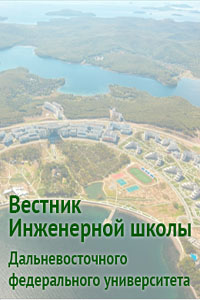Temperature fields asymmetry in friction stir welding
DOI:
https://doi.org/10.24866/2227-6858/2022-2/39-46Keywords:
friction stir welding, temperature fields, asymmetry of isotherms, removal and shift of maximum temperaturesAbstract
In friction stir welding, temperature fields in the joint zone and their distribution significantly affect the processes of mass transfer and phase transformations. This paper reveals the asymmetry in the temperature distribution and the region of their maximum values in a plate made of aluminum alloy AMg3 during its processing with tools of different diameters. For these calculations, a program was developed in the Mathlab package, which uses experimental data on heat release during linear friction stir welding at different speeds of rotation and movement of a tool of various diameters. The calculation results are shown as isotherm fields on the surface of a AMg3 aluminum alloy plate 4 mm thick for tools with diameters of 10, 14 and 20 mm and the following modes: its rotation speed is 40-100 rad/s, welding speed is 0.42-67 mm/ from. The asymmetry parameters of isotherms are characterized by the removal of the zone of maximum temperatures from the axis of rotation of the tool and its displacement from the welding line. These parameters are expressed as a percentage of the tool radius. The main result of the performed calculations is that with an increase in the rotation speed of the tool, the maximum temperatures move away from its axis, i.e. are located almost on the outer diameter of the tool, while the offset of maximum temperatures from the welding line is significantly reduced. With an increase in the welding speed, the distance from the axis of rotation and the displacement from the welding line practically do not change. As the tool diameter decreases, the maximum temperatures approach the axis of rotation and move away from the welding line.
Downloads
Published
Issue
Section
License
Copyright (c) 2022 Far Eastern Federal Univercity: School of Engineering Bulletin

This work is licensed under a Creative Commons Attribution 4.0 International License.

